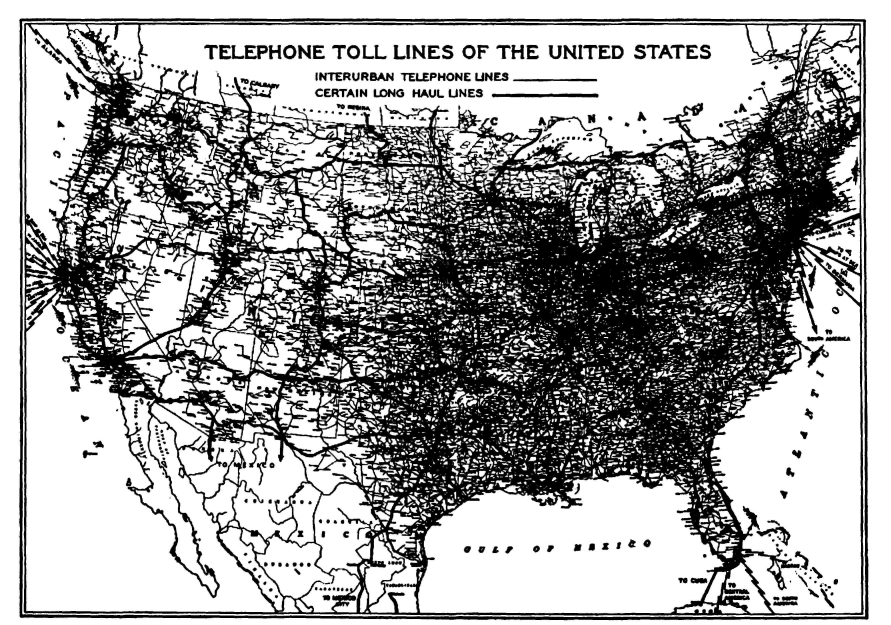| Electrical Communication is a free textbook on the basics of communication technology. See the editorial for more information.... |

|

Home  Telephone Toll Service and Systems Telephone Toll Service and Systems  Toll Switching Plans Toll Switching Plans |
|||






|
|||
Toll Switching PlansThe extent of the telephone system in the United States is indicated approximately by Fig. 2. It is evident that plans for switching toll lines must be made carefully. About 1930 a toll switching plan3 was devised as follows: Within a given area, such as a state, so-called primary outlets were chosen at important centers, and each of these outlets was directly connected with toll lines. Each outlying toll center in an area was directly connected to at least one of these primary outlets. Thus, any two toll centers in a chosen area, even though remotely located, could be connected by a maximum of only two intermediate switching operations, and in many cases with only one. In the United States and eastern Canada approximately 150 primary outlets were required to serve the 2500 toll centers, and of these 150 outlets, eight were chosen as regional centers. Each primary outlet was directly connected with at least one of these regional centers, and each regional center was directly connected with each of the other regional centers. Thus, each primary outlet could be connected to any other primary outlet in the country by a maximum of only two switching operations, and within an area served by a regional center, by only one switching operation. The original toll switching plan has been modified.2 With the advent of toll dialing and a reduction of manual toll operating, further revision of the basic system of handling toll calls will occur.
|
|||
Home  Telephone Toll Service and Systems Telephone Toll Service and Systems  Toll Switching Plans Toll Switching Plans |
|||
Last Update: 2011-05-30


